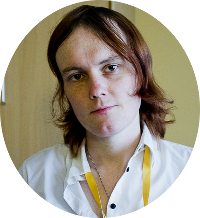From the 2011 England & Wales Census, it has been revealed that 39,200 relationships were edited/”corrected” due to an apparently invalid combination of relationships that would indicate a Polyamorous household.
Firstly, I’ll note they only did this where there was also a marriage or civil partnership involved – I.e. a triad or V where one side of the relationship has been legally recognised, so the figures will be low. Secondly, the reason the Census office edits these figures is because they believe in the majority of cases this is probably an error by those filling in the form.
Still, the figures are potentially interesting, so lets see how they stack up.
I can not find any data on the number of relationships recorded by the Census, but we know there were 23.4 million households. To get some idea of the kind of proportion of households that have indicated a Poly relationship, lets assume a maximum of one poly family per household: that gives around 0.1%-0.2%.
I am deliberately not going to be any more accurate than that because the data I’m working from is vague at best. As well as not including families without any marriage/civil partnership involved (Pushing the number down) there may be households where a couple have not yet divorced but a new partner has moved in. (Which would push the number up)
How likely is it that much of this is an error in filling in the forms? We have no real way of knowing. But I also asked for the number of marriages/civil partnerships that were edited due to an invalid combination including gender, such as indicating a marriage between a same-sex couple. That gave 50,400 edits. There are just over 100,000 civil partnerships in the UK and I can well believe somewhere around half of respondents would be bloody-minded enough to tick “marriage” and not civil partnership. There will also be Trans issues affecting this figure, but at a low enough rate to not be significant.
The above is, of course, not statistically sound in any sense and shouldn’t be used for the basis of policy or, well, anything really.
However, it’s enough to indicate that there may be a non-trivial number of Poly households out there and that warrants further study. Perhaps the Office for National Statistics can be persuaded to report in more depth on the data – they are far better statisticians than I for starters – or to conduct follow-up surveys. If the number proves to be large enough, it may even justify better investigation in the 2021 census.

I find it a bit odd (read wrong) that they edited out where someone indicated that they were married to more than one person. There are people who have come to our country who married more than one person in their country of origin, and it was legal to do so. I find it a shame that their true marital status has sometimes been erased in the census. Because you know, whilst I can’t marry in my true gender (yet) and even if I could I couldn’t marry both people who I have been in a relationship with for more than half a decade, these people have. Fair enough we’re probably talking tiny numbers, but it’s real to the people involved.